How Did Increased Industrial Production Affect The Lives Of Ordinary Americans During World War Ii?
On the morning time of Dec vii, 1941
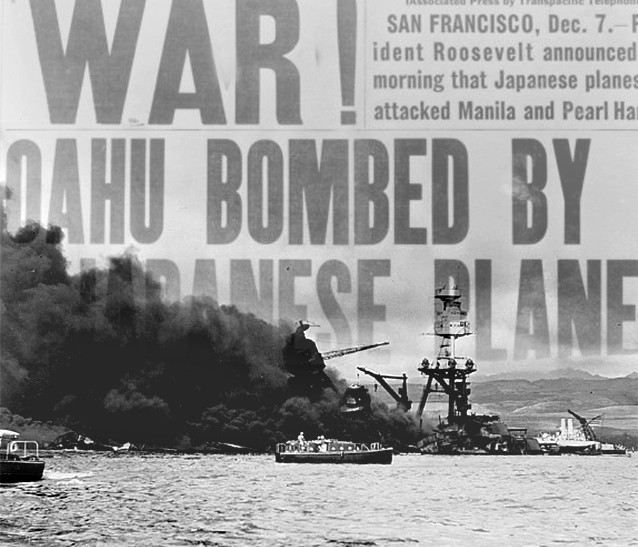
Library of Congress and overlay.
On the morning time of December 7, 1941 war machine forces of the Empire of Japan attacked the United States Naval Fleet and basis bases at Pearl Harbor in Hawaii. On December viii, 1941, one day after the "Twenty-four hours of Infamy," the U.s. declared war against the Empire of Japan and on December xi, 1941 Japan's ally, Federal republic of germany, declared war on the Usa. Sixteen million Americans, mostly young working historic period men, would serve in the military during WWII, out of an overall Usa population of 113 million. While an unprecedented number of young men would serve in World State of war Two, the country would drastically increase its state of war production on the Home Front, serving not but the needs of the armed forces of the Usa but her allies as well - what President Franklin Roosevelt chosen "The Armory of Democracy." The combination of and so many serving in the military, during a flow of necessary and drastic increases in product, led to unprecedented social changes on the American Abode Front.
Shortage of Workers
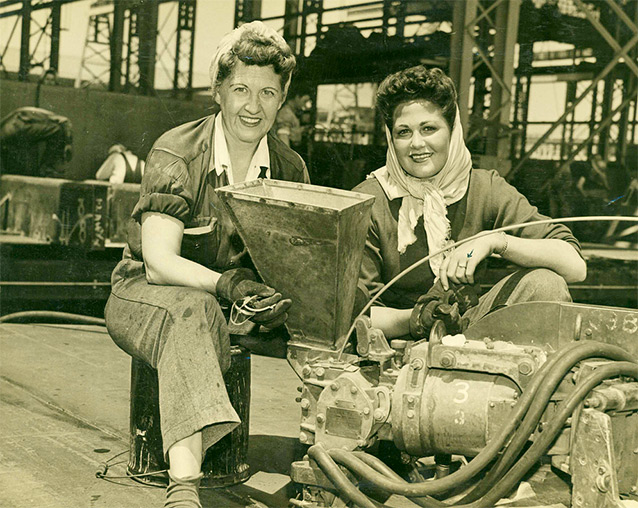
RORI 3636
A shortage of white male person workers led to active recruitment, by the United States Regime and American businesses, to war industry jobs. Initially white eye class women were recruited, followed past minority men, and finally minority women. Integration of women and minorities into the workforce was initially met with resistance, however, the new opportunities for women and minorities "cracked open" the door to equal rights and would have profound impacts on the Ceremonious Rights and Women's Movements during the following decades. During World War 2 six 1000000 women served in non-traditional jobs in the defense industries. These women later came to be known equally 'Rosies", based upon a popular vocal from 1943 entitled, "Rosie the Riveter", almost a women edifice planes during the war.
Smash Towns
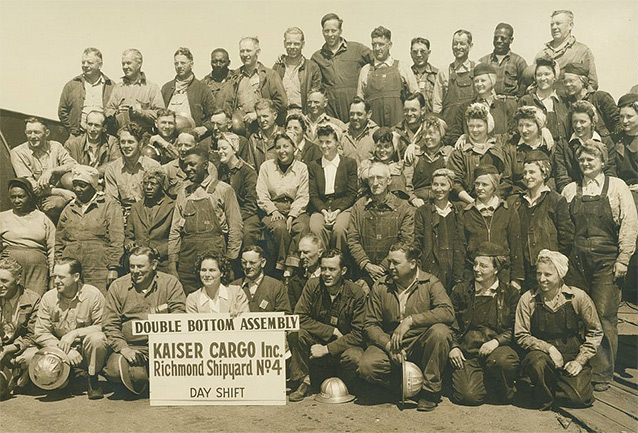
Photo by Nadaner Studios. Courtesy Rosie the Riveter/WWII Home Front NHP. RORI 1039
The World State of war II period resulted in the largest number of people migrating within the Us, in the history of the country. Individuals and families relocated to industrial centers for adept paying war jobs, and out of a sense of patriotic duty. Many industrial centers became "boom towns", growing at phenomenal rates. One example, the City of Richmond, California, grew from a population of under 24,000 to over 100,000 during the war. Workers from effectually the nation had to intermingle with each other and overcome differences, in order to come across war demands. Following World War II, many migrants decided to stay in their new homes, forever changing the cultural landscape of the United States.
Working Conditions and Challenges
Home Forepart workers faced many challenges and many of which would lead to change. Working conditions on the Home Front were difficult and dangerous. Between the bombing of Pearl Harbor in December of 1941 and the D-Mean solar day Invasion of Europe in June of 1944, at that place were more than Home Front end industrial casualties than military casualties. This high number of industrial casualties would lead to improved work place safety and regulations. Another challenge faced by working women on the Home Front end was childcare, as mothers comprised a significant portion of the work force. In some progressive communities and businesses this led to the establishment of child development centers, although nationwide simply x% of women had access to professional person childcare.
Rationing on the Home Forepart
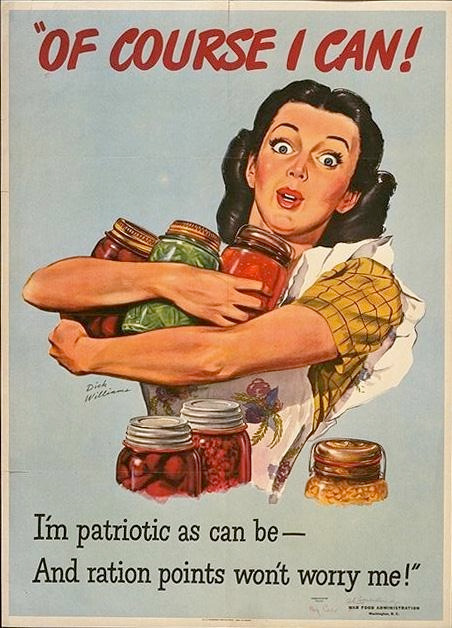
Public Domain
In addition to Home Front workers, everyone was expected to be an agile participant in the state of war effort. Rationing was a way of life as twenty commodities were rationed and people were asked to, "Use it up – Wearable it out – Make it do – or Do without." Materials vital to the war effort were collected, often past youth groups, and recycled. Many Americans supported the state of war effort by purchasing state of war bonds. Women replaced men in sports leagues, orchestras and community institutions. Americans grew lx% of the produce they consumed in "Victory Gardens". The war effort on the United States Home Front was a total endeavour.
Preserving History
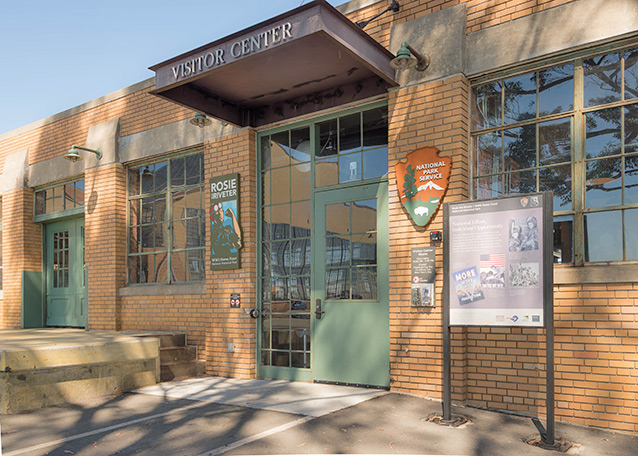
NPS Photograph
Rosie the Riveter/WWII Abode Front National Historical Park was established in Richmond, California in the year 2000, to tell this national story. The Kaiser Shipyards in Richmond produced 747 cargo ships during World War Two, the most productive shipyards in history. In addition, Richmond had a total of 55 war industries. Richmond also has a big number of intact historical buildings from the catamenia and the Richmond Museum Association, ane of the parks cooperative partners, operates the SS Red Oak Victory, the last remaining Victory Ship built in the Richmond Shipyards.
How Did Increased Industrial Production Affect The Lives Of Ordinary Americans During World War Ii?,
Source: https://www.nps.gov/articles/the-wwii-home-front.htm
Posted by: daltonthisharm.blogspot.com


0 Response to "How Did Increased Industrial Production Affect The Lives Of Ordinary Americans During World War Ii?"
Post a Comment